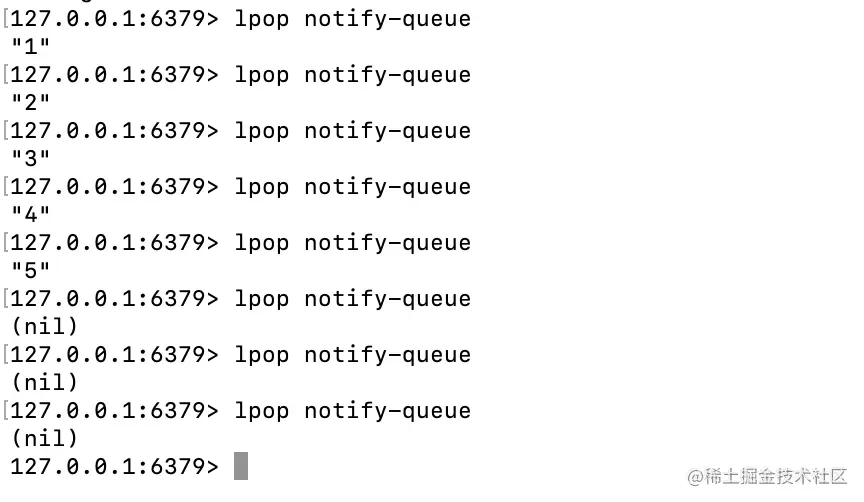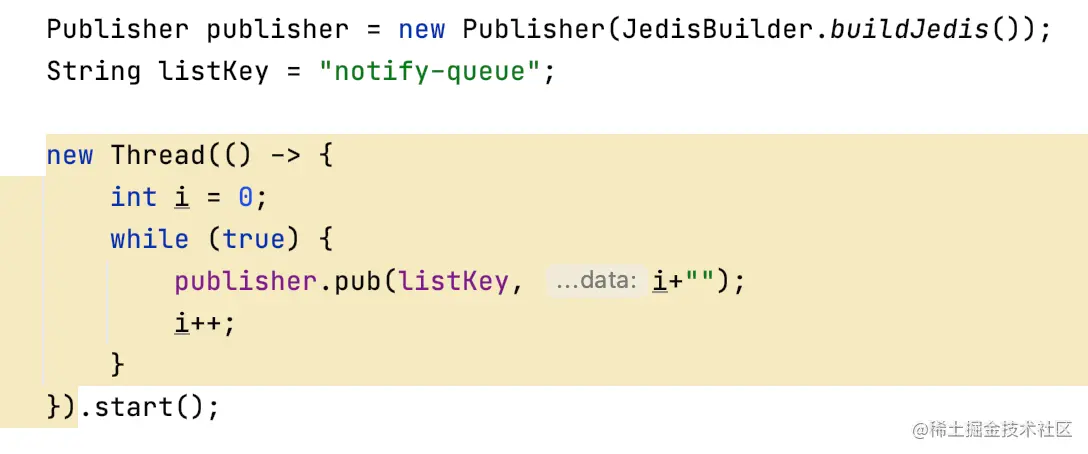 Database
Database
 Redis
Redis
 A brief discussion on the implementation methods of message queue and delayed message queue in Redis
A brief discussion on the implementation methods of message queue and delayed message queue in Redis
A brief discussion on the implementation methods of message queue and delayed message queue in Redis
How does Redis implement message queue and delayed message queue? The following article will introduce to you the implementation methods of message queue and delayed message queue in Redis. I hope it will be helpful to you!

When it comes to redis, more people may think of it as a cache. In fact, redis can also implement some simple message queue purposes. We can use the list data structure to implement the queue. . [Related recommendations: Redis Video Tutorial] Several commands of
list
lpush (left push)
by queue Store it in from the left side
rpush (right push)
Store it from the right side of the queue
lpop (left pop)
Take it out from the left side of the queue
rpop (right pop)
Take it out from the right side of the queue
The above four commands can let list help us implement queues or stacks. The characteristics of queues are advanced First out, the characteristic of the stack is first in, last out,
So the queue implementation can use lpush rpop or rpush lpop,
The stack implementation is lpush lpop or rpush rpop.

Use command demonstration queue
Producer publishes message
First we use rpush to add five elements to a queue called notify-queue, namely 1 2 3 4 5, which is to publish messages as a producer

Consumer consumption news
Since the producer uses rpush, the consumer must use lpop. You can see the picture below. We keep informing -queue consumes messages in order, from 1 to 5, and reads them in order. In the end, there are no messages in the queue, and the pop-up is always empty

Empty polling problem
When using lpop to consume messages above, you can see that after the message is consumed, every time we go to pop, we read an empty message,
The above is a manual execution command, but if the written code program keeps popping data (pulling data), it will cause empty polling (useless reading),
will both pull high It increases the CPU consumption of the client, increases the QPS of redis, and is still a useless operation. These useless operations may cause other clients' access to redis to become slow to respond.
Solution A (hibernation)
Since empty polling will cause higher resource consumption on both the client and redis, then We can let the client sleep for 1s when receiving empty data, and then pull the data after 1s, which can reduce consumption
Thread.sleep(1000)
This solution also has flaws, that is, the delay in message consumption increases. If there is only one consumer, the delay is 1s. That is, after empty polling, it happens to be sleeping, but at this time, a message happens to come. You still have to wait until 1s to wake up before consumption.
If there are multiple consumers, since the sleep time of each consumer is staggered, some latency will be reduced, but is there a better way? Method that can achieve almost 0 latency?
Solution B (Blocking Read)
There are actually two commands in redis about queue data fetching, namely blocking reading,
blpop (blocking left pop)
brpop (blocking right pop)
Blocking read will enter a dormant state when there is no data in the queue. Once a message comes, Then react immediately and read the data, so using blpop/brpop to replace lpop/rpop can solve the problem of message delay.
Continue to queue 3 attributes, 6, 7, 8

Use blpop to read the queue. The last parameter is the waiting time for blocking reading. If there is no message after this time, nil will be returned. At this time, you can continue to repeat the blpop operation.

The problem of automatic disconnection of idle connections for blocking reads
When the client uses blocking reading, if the blocking time is too long, The service will generally treat it as an idle connection and actively disconnect it to reduce useless connections occupying resources. At this time, the client will throw an exception,
So please note that when the client uses blocking reading, It is necessary to catch exceptions and handle them accordingly, such as retrying.
java client implements message queue
The idea is the same as above, except that the command line client redis-cli is changed into java language. One thread or multiple threads publish rpush,
Another thread or threads perform blpop consumption. The completed code is at: https://github.com/qiaomengnan16/redis-demo/tree/main/redis-queue
Publisher

Subscriber

##Implementation ideas of delay queue
The delay queue refers to a period of time after the message is sent, and then consumed by the consumer, rather than after the message is sent, the consumer can read it immediately, zset can help us do this. First, zset can be sorted by score, and score can store a timestamp. So every time we publish a message, we use the current timestamp plus the delayed timestamp,When the consumer then retrieves the message, it intercepts the zset data and obtains the message that has satisfied the current time (that is, the data with a score less than or equal to the current timestamp is obtained. The score less than or equal to the current timestamp means that the message has reached the time. If it is larger, it means you have to wait for a while before consumption). Key commands zadd (publisher), zrangebyscore (subscriber), zrem (subscriber deletes after consuming data)
Command implementation
We used zadd to add 4 pieces of data, which are data that can be consumed after 1, 2, and 3 seconds (pseudo-speak, this is actually just a score), and there is also kafka that can be consumed after 10 seconds.


Code implementation
Publisher

Subscriber

 Full code address: https://github.com/qiaomengnan16/redis-demo/tree/main/redis-delayed-queue
Full code address: https://github.com/qiaomengnan16/redis-demo/tree/main/redis-delayed-queue
There is a problem in the delay queue implemented above. When using zrem to determine whether to grab the data, it is very likely that it has not been grabbed. If you continue to read like this, you may not be able to grab it for several rounds, and resources are wasted. Therefore, optimization can be carried out through Lua scripts,
Let zrangebyscore and zrem become an atomic operation, which can avoid multi-thread contention and waste of resources that cannot be grabbed.
 Conclusion
Conclusion
Some professional queue middleware will be more complicated to apply and Increase operation and maintenance costs, such as RabbitMQ. Before sending a message, you need to create an Exchange switch and then create a Queue. Then the Exchange and the Queue need to be bound. When sending a message, you must specify the routing-key to match the Exchange and finally reach the Queue.
If the scenario is simple, you can use redis to implement a queue, but it should be noted that redis does not have the characteristics of a professional queue, and there is no guarantee of ack, which means that the message is unreliable. After the consumption fails, it will be gone. If you need 100% reliability, you still need to use professional queue middleware and other mechanisms such as ack as a guarantee. For more programming-related knowledge, please visit:Introduction to Programming
! !The above is the detailed content of A brief discussion on the implementation methods of message queue and delayed message queue in Redis. For more information, please follow other related articles on the PHP Chinese website!

Hot AI Tools

Undresser.AI Undress
AI-powered app for creating realistic nude photos

AI Clothes Remover
Online AI tool for removing clothes from photos.

Undress AI Tool
Undress images for free

Clothoff.io
AI clothes remover

AI Hentai Generator
Generate AI Hentai for free.

Hot Article

Hot Tools

Notepad++7.3.1
Easy-to-use and free code editor

SublimeText3 Chinese version
Chinese version, very easy to use

Zend Studio 13.0.1
Powerful PHP integrated development environment

Dreamweaver CS6
Visual web development tools

SublimeText3 Mac version
God-level code editing software (SublimeText3)

Hot Topics
 1377
1377
 52
52
 How to build the redis cluster mode
Apr 10, 2025 pm 10:15 PM
How to build the redis cluster mode
Apr 10, 2025 pm 10:15 PM
Redis cluster mode deploys Redis instances to multiple servers through sharding, improving scalability and availability. The construction steps are as follows: Create odd Redis instances with different ports; Create 3 sentinel instances, monitor Redis instances and failover; configure sentinel configuration files, add monitoring Redis instance information and failover settings; configure Redis instance configuration files, enable cluster mode and specify the cluster information file path; create nodes.conf file, containing information of each Redis instance; start the cluster, execute the create command to create a cluster and specify the number of replicas; log in to the cluster to execute the CLUSTER INFO command to verify the cluster status; make
 How to implement the underlying redis
Apr 10, 2025 pm 07:21 PM
How to implement the underlying redis
Apr 10, 2025 pm 07:21 PM
Redis uses hash tables to store data and supports data structures such as strings, lists, hash tables, collections and ordered collections. Redis persists data through snapshots (RDB) and append write-only (AOF) mechanisms. Redis uses master-slave replication to improve data availability. Redis uses a single-threaded event loop to handle connections and commands to ensure data atomicity and consistency. Redis sets the expiration time for the key and uses the lazy delete mechanism to delete the expiration key.
 What to do if redis-server can't be found
Apr 10, 2025 pm 06:54 PM
What to do if redis-server can't be found
Apr 10, 2025 pm 06:54 PM
Steps to solve the problem that redis-server cannot find: Check the installation to make sure Redis is installed correctly; set the environment variables REDIS_HOST and REDIS_PORT; start the Redis server redis-server; check whether the server is running redis-cli ping.
 How to view all keys in redis
Apr 10, 2025 pm 07:15 PM
How to view all keys in redis
Apr 10, 2025 pm 07:15 PM
To view all keys in Redis, there are three ways: use the KEYS command to return all keys that match the specified pattern; use the SCAN command to iterate over the keys and return a set of keys; use the INFO command to get the total number of keys.
 How to read the source code of redis
Apr 10, 2025 pm 08:27 PM
How to read the source code of redis
Apr 10, 2025 pm 08:27 PM
The best way to understand Redis source code is to go step by step: get familiar with the basics of Redis. Select a specific module or function as the starting point. Start with the entry point of the module or function and view the code line by line. View the code through the function call chain. Be familiar with the underlying data structures used by Redis. Identify the algorithm used by Redis.
 How to view the version number of redis
Apr 10, 2025 pm 05:57 PM
How to view the version number of redis
Apr 10, 2025 pm 05:57 PM
To view the Redis version number, you can use the following three methods: (1) enter the INFO command, (2) start the server with the --version option, and (3) view the configuration file.
 How to use the redis command
Apr 10, 2025 pm 08:45 PM
How to use the redis command
Apr 10, 2025 pm 08:45 PM
Using the Redis directive requires the following steps: Open the Redis client. Enter the command (verb key value). Provides the required parameters (varies from instruction to instruction). Press Enter to execute the command. Redis returns a response indicating the result of the operation (usually OK or -ERR).
 How to set the redis expiration policy
Apr 10, 2025 pm 10:03 PM
How to set the redis expiration policy
Apr 10, 2025 pm 10:03 PM
There are two types of Redis data expiration strategies: periodic deletion: periodic scan to delete the expired key, which can be set through expired-time-cap-remove-count and expired-time-cap-remove-delay parameters. Lazy Deletion: Check for deletion expired keys only when keys are read or written. They can be set through lazyfree-lazy-eviction, lazyfree-lazy-expire, lazyfree-lazy-user-del parameters.



